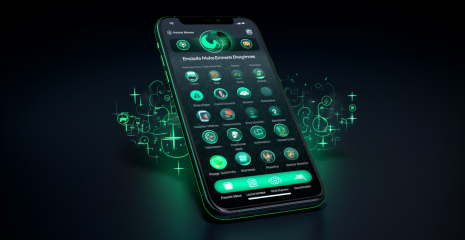

Most programs have a tracking feature. In this article, you will learn what tracking is most often used for. You will learn that operating systems can also be tracked, because few people read the agreement when installing this system. And you? You will learn the differences between proprietary and open/free software, and we will discuss using the example of Windows (proprietary) and the Unix family (open) of similar systems, Google Android (open) and Apple IOS (proprietary). The main difference between free licenses is that they do not limit personal use at all – the user is free to accept them or not: he can work with the program even without a license. After you get an understanding of what licenses and types of distribution are – you will learn that proprietary software does not give the user a full understanding of how the program is organized, what additional mechanisms are in it, whether there is undocumented functionality and most importantly, whether it contains vulnerabilities, to be as sure as possible that some software is not tracking you, use free or open source software and analyze it, and don’t forget to use our recommendations and instructions! You will learn that proprietary software can potentially be tracked, but free software is very likely not to be tracked. Most of the programs you use have a not very pleasant functionality, namely tracking. Most often, you and your actions are tracked for the purpose of displaying advertisements (and potential earnings), but it can be used for other purposes as well. Operating systems can also be tracked, OS WINDOWS can serve as a vivid example (Did anyone read the agreement when installing this system?). And now we will move on to a little self-education, and we will start to understand the order ourselves and, as always, we will add a little terminology – there is no place without it (Wikipedia meet, dear). If the distribution of programs is very abstract, it can be divided into two types of licenses: proprietary licenses and licenses of free and open software (hereinafter – software). To understand the global differences between these licenses, let’s consider the points of cardinal difference.
Proprietary software – The most significant consequence of using a proprietary license is that the end user is obliged to accept it, since the owner of the software is not him, but the publisher of the program. In case of refusal to accept the license, the user cannot work with the program at all.
Free and open software – The main difference between free licenses is that they do not limit personal use at all – the user is free to accept them or not: he can work with the program even without a license. However, if he needs any of the additional rights granted by the license (for example, to distribute the software, or to provide access to it over the network, he is obliged to accept the license and act within its framework).
Having gained an understanding of what licenses and types of distribution are, let’s move on to the main one. Proprietary software does not give the user a full understanding of how the program is organized, what additional mechanisms it contains, whether there is undocumented functionality, and most importantly, whether it contains vulnerabilities.
Free software, unlike proprietary software, gives the opportunity to study the source code of the program, if you have the necessary skills, the opportunity to change it to your needs and be sure of the absence of undocumented functionality, and most importantly from the security side, this software is studied by a large number of programmers, security experts and other specialists, and thanks to this, most often vulnerabilities (defects) are detected at very early stages, thanks to the open code they can be fixed as quickly as possible.
Let’s sum up – they will be short – proprietary software (potentially they can track), free software – with a very large share of probability they are not tracked.
To be as sure as possible that some software is not tracking you, use free or open source software and analyze it, and don’t forget to use our recommendations and instructions!



